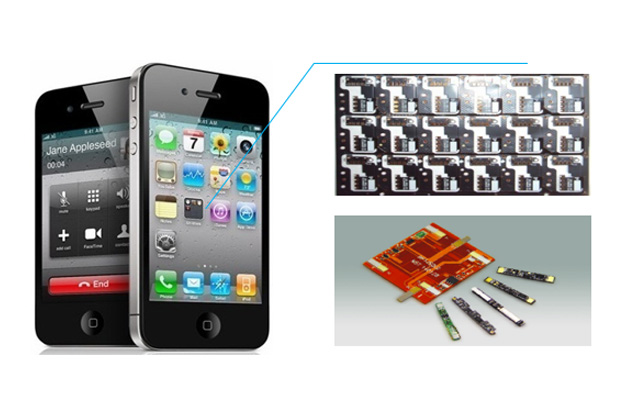
As the most important growth driver of FPC PCB, smartphone is driven by Apple and its demonstration effect. FPC PCB has been rapidly penetrated and maintained a high growth rate every year since 2009. In 2017, as the only bright spot in PCB industry, it became the only category that achieved positive growth.
Apple is a staunch supporter of FPC PCB. It uses as many as 16 pieces of FPC PCB in its iPhone. The FPC consumption of Samsung mobile phones is about 12-13 pieces, while the FPC consumption of Huawei, OPPO and VIVO single devices is about 10-12 pieces. Following Apple's example, SAMSUNG, HUAWEI, OPPO, VIVO, XIAOMI And other smart phone manufacturers are also increasing their FPC PCB usage in their smartphones. Such as: Unit for camera, Display unit, Memory Card unit, Connection Cable unit, Wiring unit, Operating Switch, Hinge (Hyper Flexural Bending), fingerprint identification Unit etc.
According to IDC, 1.47 billion smartphones were shipped worldwide in 2017. With the innovation and upgrading of smart phones, FPC PCB is required for fingerprint recognition, dual cameras, full screen, wireless charging, face recognition and other applications. The usage of FPC PCB and electromagnetic shielding film will grow with the increasing features of smart phones.
Among them, the fingerprint identification technology is becoming more and more mature, with huge development space. No matter unlocking the phone, replacing the password, or mobile payment, fingerprint identification has unlimited imagination space, indirectly promoting the shipment of FPC PCB for fingerprint identification, which has become the fastest growing FPC PCB segmentation application field in recent years.
At the same time, new applications of 5G will bring new growth in the FPC PCB market, with high-speed and high-frequency FPC PCB becoming the main development direction. High performance FPC PCB is the key factor affecting the quality of double-sided screen/foldable screen mobile phone. The launch of double-sided screen/foldable screen mobile phone will put forward higher requirements on the free bending, winding, folding and shielding efficiency of FPC flexible circuit board.
With the rapid expansion of smart phones, tablet computers, LED TVS, ultra-thin laptops and other applications, consumer electronics are leading to the development of miniaturization, refinement and portability. Global consumer electronics have entered a thin and diversified era, which brings more and more market space to FPC PCB.

